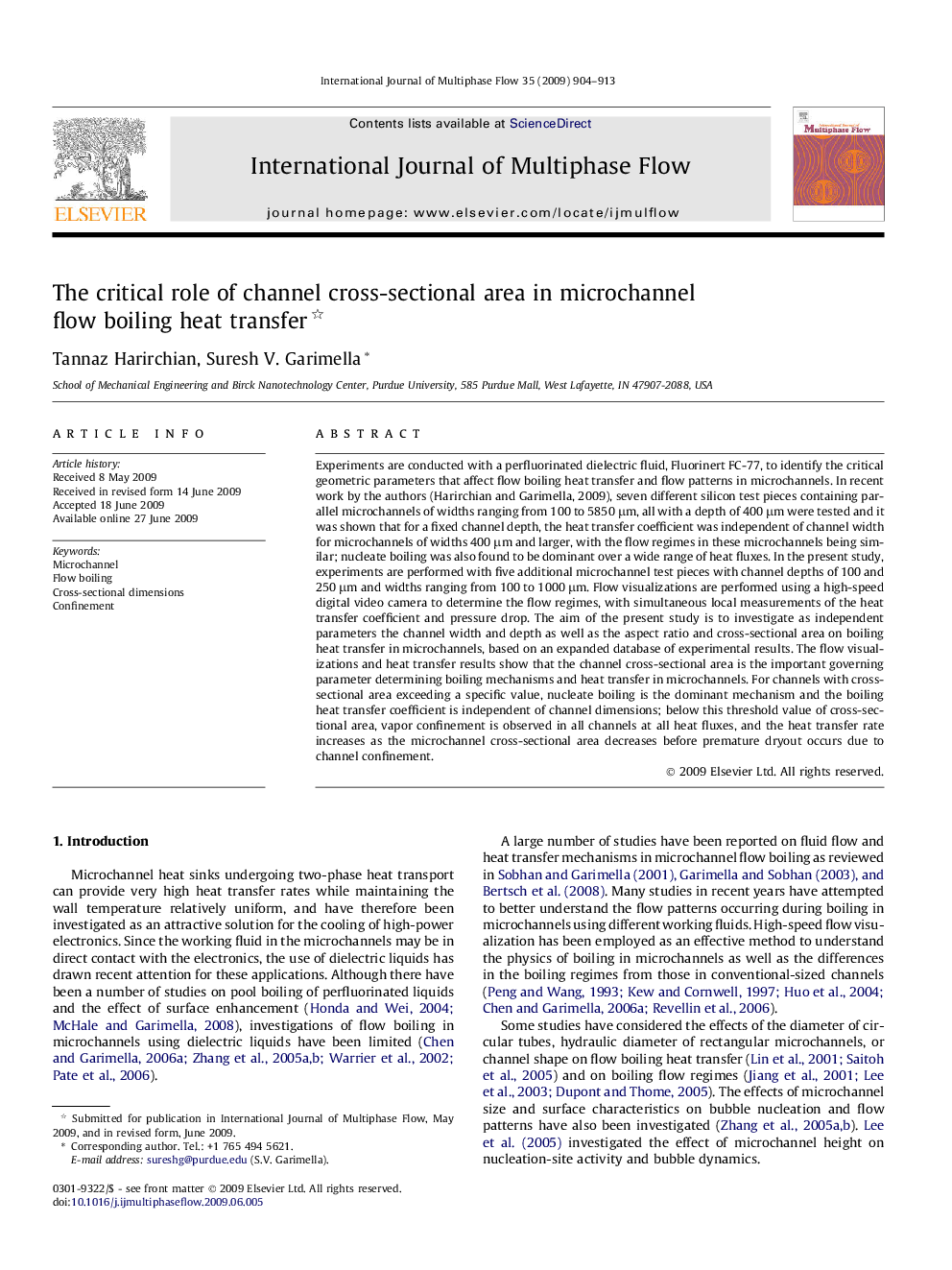| کد مقاله | کد نشریه | سال انتشار | مقاله انگلیسی | نسخه تمام متن |
|---|---|---|---|---|
| 667453 | 1458565 | 2009 | 10 صفحه PDF | دانلود رایگان |

Experiments are conducted with a perfluorinated dielectric fluid, Fluorinert FC-77, to identify the critical geometric parameters that affect flow boiling heat transfer and flow patterns in microchannels. In recent work by the authors (Harirchian and Garimella, 2009), seven different silicon test pieces containing parallel microchannels of widths ranging from 100 to 5850 μm, all with a depth of 400 μm were tested and it was shown that for a fixed channel depth, the heat transfer coefficient was independent of channel width for microchannels of widths 400 μm and larger, with the flow regimes in these microchannels being similar; nucleate boiling was also found to be dominant over a wide range of heat fluxes. In the present study, experiments are performed with five additional microchannel test pieces with channel depths of 100 and 250 μm and widths ranging from 100 to 1000 μm. Flow visualizations are performed using a high-speed digital video camera to determine the flow regimes, with simultaneous local measurements of the heat transfer coefficient and pressure drop. The aim of the present study is to investigate as independent parameters the channel width and depth as well as the aspect ratio and cross-sectional area on boiling heat transfer in microchannels, based on an expanded database of experimental results. The flow visualizations and heat transfer results show that the channel cross-sectional area is the important governing parameter determining boiling mechanisms and heat transfer in microchannels. For channels with cross-sectional area exceeding a specific value, nucleate boiling is the dominant mechanism and the boiling heat transfer coefficient is independent of channel dimensions; below this threshold value of cross-sectional area, vapor confinement is observed in all channels at all heat fluxes, and the heat transfer rate increases as the microchannel cross-sectional area decreases before premature dryout occurs due to channel confinement.
Journal: International Journal of Multiphase Flow - Volume 35, Issue 10, October 2009, Pages 904–913